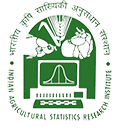Globally, 55% of rice is cultivated under irrigated conditions, which is the most productive and remunerative ecosystem while 43% is cultivated in rainfed conditions. About half of rain fed rice cultivation in Asia is drought prone. Availability of water is a major concern in upland cultivation, and intensity of drought is more in this system with yield loss to the tune of 190 kg/ha equaling 20% of average yield. Plants have developed various mechanisms to adapt and tolerate water deficit stress at cellular level and molecular level via various physiological and biochemical means. This database is an attempt to consolidate the various drought specific experiments undertaken in rice to help the molecular biologists and breeders alike. Search options specific to genotypes, tissues, growth stages as well as genes commonly identified as responsive across experiments are possible.
Our database has drought responsive genes (DRGs) in rice identified from different experiments. DRGs identified from the raw data available in the public domain and analyzed employing uniform parameters in R are given here. Search for DRGs has been enabled from genotypes (varieties), growth stages and specific tissues used in the microarray experiment. Common DRGs across varieties (up to 3) can also be searched by the user. Search for a particular rice locus would fetch information whether it is a DRG and if yes, the different experiments which identified it. External link to genome browser is also available under Locus search. For the benefit of breeders, the search for microsatellites markers in DRG loci is also enabled.
Data Details
| S.No | GEO Accession ID | No. of Samples | Rice Genotype | Growth Stage | Tissue | Response to Drought Stress |
|---|---|---|---|---|---|---|
| 1 | GSE24048 | 12 | Azucena | Vegatative Stage | Leaf | Tolerant |
| Bala | Vegatative Stage | Leaf | Tolerant | |||
| 2 | GSE25176 | 16 | IRAT109 | Reproductive Stage | Flag Leaf | Tolerant |
| ZS97 | Reproductive Stage | Flag Leaf | Susceptible | |||
| 3 | GSE26280 | 36 | IR64 | Booting Stage | Flag Leaf | Susceptible |
| IR64 | Booting Stage | Panicle | Susceptible | |||
| IR64 | Panicle Elongation Stage | Flag Leaf | Susceptible | |||
| IR64 | Panicle Elongation Stage | Root | Susceptible | |||
| IR64 | Tillering Stage | Leaf | Susceptible | |||
| IR64 | Tillering Stage | Root | Susceptible | |||
| 4 | GSE41647 | 18 | Dhaggadeshi | Seedling Stage | Seedling | Tolerant |
| IR20 | Seedling Stage | Seedling | Susceptible | |||
| 5 | GSE57154 | 35 | Moroberekan | Reproductive Stage | Anther | Tolerant |
| Moroberekan | Reproductive Stage | Pistils | Tolerant | |||
| N22 | Reproductive Stage | Anther | Tolerant | |||
| N22 | Reproductive Stage | Pistils | Tolerant | |||
| 6 | GSE81253 | 14 | Nipponbare | Seedling Stage | Leaf | Susceptible |
| Nipponbare | Vegatative Stage | Leaf | Susceptible | |||
| Nipponbare | Reproductive Stage | Flag Leaf | Susceptible |
How do I use DB?
For DRGs in a variety:Click on drop down list to choose a variety. This will give you list of DRGs in a variety with their fold change expression values and annotation. This entire information can be copied to any text document for further use.
For DRGs in a tissue or growth stage:First, click on the appropriate option (tissue/growth stage) and further click on the drop down menu to choose the tissue or growth stage of your choice. This will give the list of DRGs in the item chosen across varieties. The list of varieties in which the DRGs were identified is also mentioned for the user's reference.
For common DRGs in more than one variety:It is possible to search for differentially expressed DRGs common to two or three genotypes. The user may select any two or three genotypes of his interest and the output would consist of common DRGs with their LOC and RAP IDs and annotation. Further information on the nature of expression in the individual genotypes could be gathererd by selecting the particular locus ID.
For DRG locus search:Here any locus ID can be given as input. The format should be LOC_Os06g01590. This will give complete information on the tissue, stage and variety from which the gene was identified as DRG.
For SSR locus search:The input format is as same as above. If the input gene is a DRG then the microsatellite motifs in the gene and appropriate primers for its amplification will be displayed.


